[Anchor]
How many bridges are there over the Han River?
Starting with the Han River Railway Bridge built in 1900, a total of 32 bridges have been constructed, including the Olympic Bridge in 1989 and the World Cup Bridge in 2021.
And on the first day of this year, the 33rd bridge was opened.
It is the 'Godeok Topyeong Bridge' connecting Guri City in Gyeonggi Province and Gangdong District in Seoul.
This bridge, supported by cables connected to two main towers, is recorded as the longest concrete cable-stayed bridge in the world.
With the opening of the Godeok Topyeong Bridge, it is expected that traffic congestion for commuters using the metropolitan area expressway will decrease.
Reporter Lee Seung-cheol has the details.
[Report]
A bridge stretching elegantly over the Han River, which is 1 km wide, has only two piers in the middle of the river.
The distance between the piers is 540 meters, making the Godeok Topyeong Bridge the longest concrete cable-stayed bridge in the world.
[Seo Sang-cheol/Construction Site Manager, Hyundai E&C: "We designed the bridge to be slim and open to showcase the untouched nature."]
The Godeok Topyeong Bridge is part of the Sejong-Pocheon Expressway, and the Gangbyeonbuk-ro near the Namguri Interchange, where the bridge begins, has experienced traffic congestion due to vehicles merging from Seoul to Namyangju and those coming down from the north.
After analyzing data for 20 days following the bridge's opening, there was no significant change in traffic volume towards Seoul, but traffic volume towards Namyangju decreased by more than 6.5% on weekdays, and by about 7-8% during peak commuting hours.
[Song Heung-jae/Director of Traffic Administration, Guri City: "We predict that traffic volume towards Gangnam and Pangyo in Seoul has been dispersed, slightly alleviating congestion on Gangbyeonbuk-ro and the Topyeong Intersection."]
The Sejong-Pocheon Expressway, which previously only connected the northern part of Gyeonggi Province from Pocheon to Guri, is now connected to Anseong with the opening of the Godeok Topyeong Bridge, allowing for faster travel from the northeastern to the southern parts of Gyeonggi Province.
[Oh Hyun-woo/Deputy Manager, Korea Expressway Corporation, Seoul-Gyeonggi Headquarters: "With the opening of the Anseong-Guri section, we expect a traffic volume dispersion effect of 12% on the Gyeongbu Line and 15% on the Jungbu Line, which will greatly help alleviate traffic congestion in the metropolitan area during the Lunar New Year holiday."]
Once the Sejong-Pocheon Expressway, known as the Second Gyeongbu Line, is fully opened as planned by the end of next year, the travel time from Seoul to Sejong is expected to be reduced to about one hour.
This is KBS News, Lee Seung-cheol reporting.
How many bridges are there over the Han River?
Starting with the Han River Railway Bridge built in 1900, a total of 32 bridges have been constructed, including the Olympic Bridge in 1989 and the World Cup Bridge in 2021.
And on the first day of this year, the 33rd bridge was opened.
It is the 'Godeok Topyeong Bridge' connecting Guri City in Gyeonggi Province and Gangdong District in Seoul.
This bridge, supported by cables connected to two main towers, is recorded as the longest concrete cable-stayed bridge in the world.
With the opening of the Godeok Topyeong Bridge, it is expected that traffic congestion for commuters using the metropolitan area expressway will decrease.
Reporter Lee Seung-cheol has the details.
[Report]
A bridge stretching elegantly over the Han River, which is 1 km wide, has only two piers in the middle of the river.
The distance between the piers is 540 meters, making the Godeok Topyeong Bridge the longest concrete cable-stayed bridge in the world.
[Seo Sang-cheol/Construction Site Manager, Hyundai E&C: "We designed the bridge to be slim and open to showcase the untouched nature."]
The Godeok Topyeong Bridge is part of the Sejong-Pocheon Expressway, and the Gangbyeonbuk-ro near the Namguri Interchange, where the bridge begins, has experienced traffic congestion due to vehicles merging from Seoul to Namyangju and those coming down from the north.
After analyzing data for 20 days following the bridge's opening, there was no significant change in traffic volume towards Seoul, but traffic volume towards Namyangju decreased by more than 6.5% on weekdays, and by about 7-8% during peak commuting hours.
[Song Heung-jae/Director of Traffic Administration, Guri City: "We predict that traffic volume towards Gangnam and Pangyo in Seoul has been dispersed, slightly alleviating congestion on Gangbyeonbuk-ro and the Topyeong Intersection."]
The Sejong-Pocheon Expressway, which previously only connected the northern part of Gyeonggi Province from Pocheon to Guri, is now connected to Anseong with the opening of the Godeok Topyeong Bridge, allowing for faster travel from the northeastern to the southern parts of Gyeonggi Province.
[Oh Hyun-woo/Deputy Manager, Korea Expressway Corporation, Seoul-Gyeonggi Headquarters: "With the opening of the Anseong-Guri section, we expect a traffic volume dispersion effect of 12% on the Gyeongbu Line and 15% on the Jungbu Line, which will greatly help alleviate traffic congestion in the metropolitan area during the Lunar New Year holiday."]
Once the Sejong-Pocheon Expressway, known as the Second Gyeongbu Line, is fully opened as planned by the end of next year, the travel time from Seoul to Sejong is expected to be reduced to about one hour.
This is KBS News, Lee Seung-cheol reporting.
■ 제보하기
▷ 카카오톡 : 'KBS제보' 검색, 채널 추가
▷ 전화 : 02-781-1234, 4444
▷ 이메일 : kbs1234@kbs.co.kr
▷ 유튜브, 네이버, 카카오에서도 KBS뉴스를 구독해주세요!
- 33rd Hangang River Bridge effect
-
- 입력 2025-01-25 01:15:56
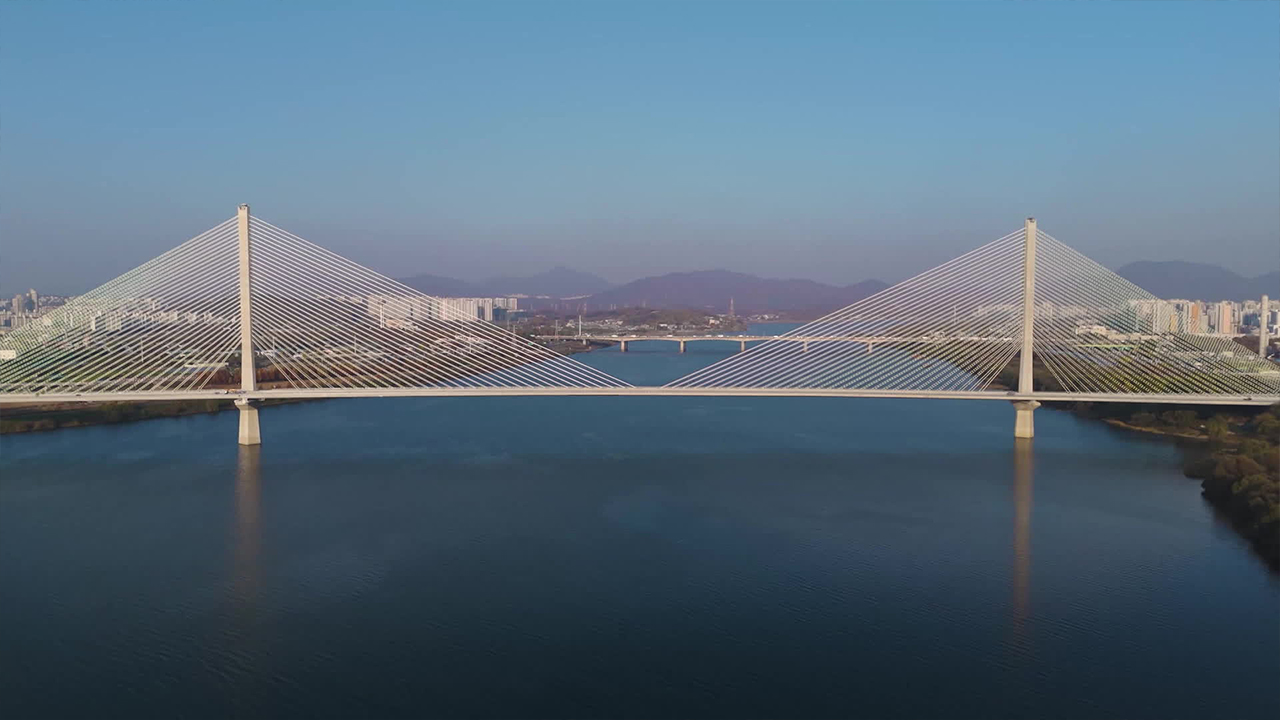
[Anchor]
How many bridges are there over the Han River?
Starting with the Han River Railway Bridge built in 1900, a total of 32 bridges have been constructed, including the Olympic Bridge in 1989 and the World Cup Bridge in 2021.
And on the first day of this year, the 33rd bridge was opened.
It is the 'Godeok Topyeong Bridge' connecting Guri City in Gyeonggi Province and Gangdong District in Seoul.
This bridge, supported by cables connected to two main towers, is recorded as the longest concrete cable-stayed bridge in the world.
With the opening of the Godeok Topyeong Bridge, it is expected that traffic congestion for commuters using the metropolitan area expressway will decrease.
Reporter Lee Seung-cheol has the details.
[Report]
A bridge stretching elegantly over the Han River, which is 1 km wide, has only two piers in the middle of the river.
The distance between the piers is 540 meters, making the Godeok Topyeong Bridge the longest concrete cable-stayed bridge in the world.
[Seo Sang-cheol/Construction Site Manager, Hyundai E&C: "We designed the bridge to be slim and open to showcase the untouched nature."]
The Godeok Topyeong Bridge is part of the Sejong-Pocheon Expressway, and the Gangbyeonbuk-ro near the Namguri Interchange, where the bridge begins, has experienced traffic congestion due to vehicles merging from Seoul to Namyangju and those coming down from the north.
After analyzing data for 20 days following the bridge's opening, there was no significant change in traffic volume towards Seoul, but traffic volume towards Namyangju decreased by more than 6.5% on weekdays, and by about 7-8% during peak commuting hours.
[Song Heung-jae/Director of Traffic Administration, Guri City: "We predict that traffic volume towards Gangnam and Pangyo in Seoul has been dispersed, slightly alleviating congestion on Gangbyeonbuk-ro and the Topyeong Intersection."]
The Sejong-Pocheon Expressway, which previously only connected the northern part of Gyeonggi Province from Pocheon to Guri, is now connected to Anseong with the opening of the Godeok Topyeong Bridge, allowing for faster travel from the northeastern to the southern parts of Gyeonggi Province.
[Oh Hyun-woo/Deputy Manager, Korea Expressway Corporation, Seoul-Gyeonggi Headquarters: "With the opening of the Anseong-Guri section, we expect a traffic volume dispersion effect of 12% on the Gyeongbu Line and 15% on the Jungbu Line, which will greatly help alleviate traffic congestion in the metropolitan area during the Lunar New Year holiday."]
Once the Sejong-Pocheon Expressway, known as the Second Gyeongbu Line, is fully opened as planned by the end of next year, the travel time from Seoul to Sejong is expected to be reduced to about one hour.
This is KBS News, Lee Seung-cheol reporting.
How many bridges are there over the Han River?
Starting with the Han River Railway Bridge built in 1900, a total of 32 bridges have been constructed, including the Olympic Bridge in 1989 and the World Cup Bridge in 2021.
And on the first day of this year, the 33rd bridge was opened.
It is the 'Godeok Topyeong Bridge' connecting Guri City in Gyeonggi Province and Gangdong District in Seoul.
This bridge, supported by cables connected to two main towers, is recorded as the longest concrete cable-stayed bridge in the world.
With the opening of the Godeok Topyeong Bridge, it is expected that traffic congestion for commuters using the metropolitan area expressway will decrease.
Reporter Lee Seung-cheol has the details.
[Report]
A bridge stretching elegantly over the Han River, which is 1 km wide, has only two piers in the middle of the river.
The distance between the piers is 540 meters, making the Godeok Topyeong Bridge the longest concrete cable-stayed bridge in the world.
[Seo Sang-cheol/Construction Site Manager, Hyundai E&C: "We designed the bridge to be slim and open to showcase the untouched nature."]
The Godeok Topyeong Bridge is part of the Sejong-Pocheon Expressway, and the Gangbyeonbuk-ro near the Namguri Interchange, where the bridge begins, has experienced traffic congestion due to vehicles merging from Seoul to Namyangju and those coming down from the north.
After analyzing data for 20 days following the bridge's opening, there was no significant change in traffic volume towards Seoul, but traffic volume towards Namyangju decreased by more than 6.5% on weekdays, and by about 7-8% during peak commuting hours.
[Song Heung-jae/Director of Traffic Administration, Guri City: "We predict that traffic volume towards Gangnam and Pangyo in Seoul has been dispersed, slightly alleviating congestion on Gangbyeonbuk-ro and the Topyeong Intersection."]
The Sejong-Pocheon Expressway, which previously only connected the northern part of Gyeonggi Province from Pocheon to Guri, is now connected to Anseong with the opening of the Godeok Topyeong Bridge, allowing for faster travel from the northeastern to the southern parts of Gyeonggi Province.
[Oh Hyun-woo/Deputy Manager, Korea Expressway Corporation, Seoul-Gyeonggi Headquarters: "With the opening of the Anseong-Guri section, we expect a traffic volume dispersion effect of 12% on the Gyeongbu Line and 15% on the Jungbu Line, which will greatly help alleviate traffic congestion in the metropolitan area during the Lunar New Year holiday."]
Once the Sejong-Pocheon Expressway, known as the Second Gyeongbu Line, is fully opened as planned by the end of next year, the travel time from Seoul to Sejong is expected to be reduced to about one hour.
This is KBS News, Lee Seung-cheol reporting.
-
-

이승철 기자 bullseye@kbs.co.kr
이승철 기자의 기사 모음
-
이 기사가 좋으셨다면
-
좋아요
0
-
응원해요
0
-
후속 원해요
0










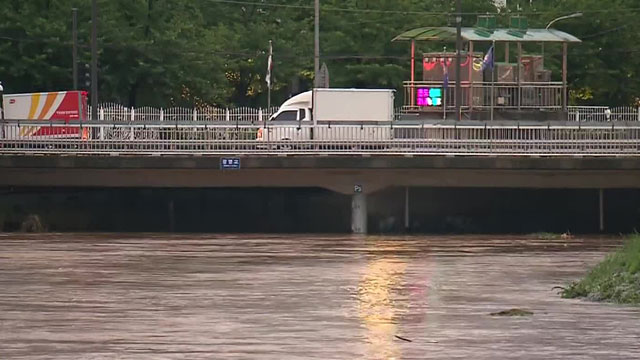
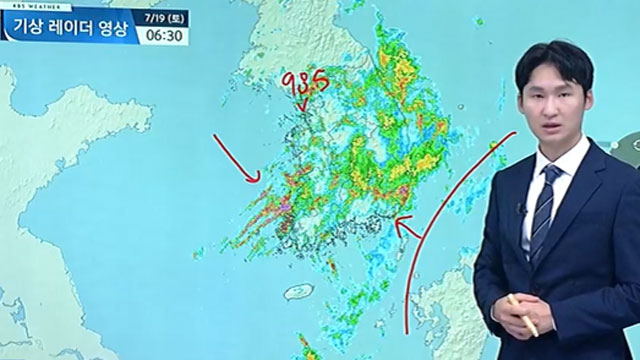
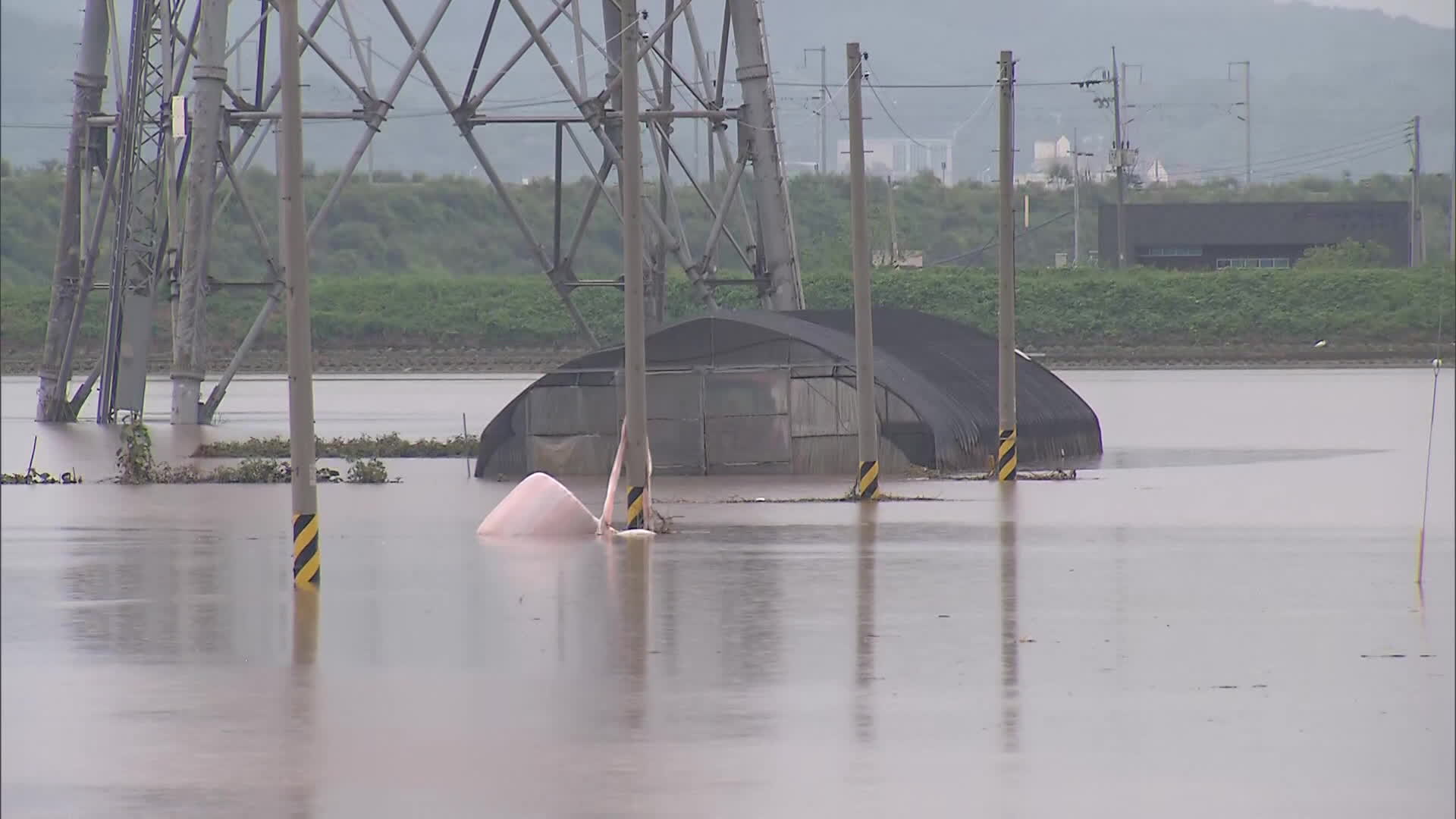
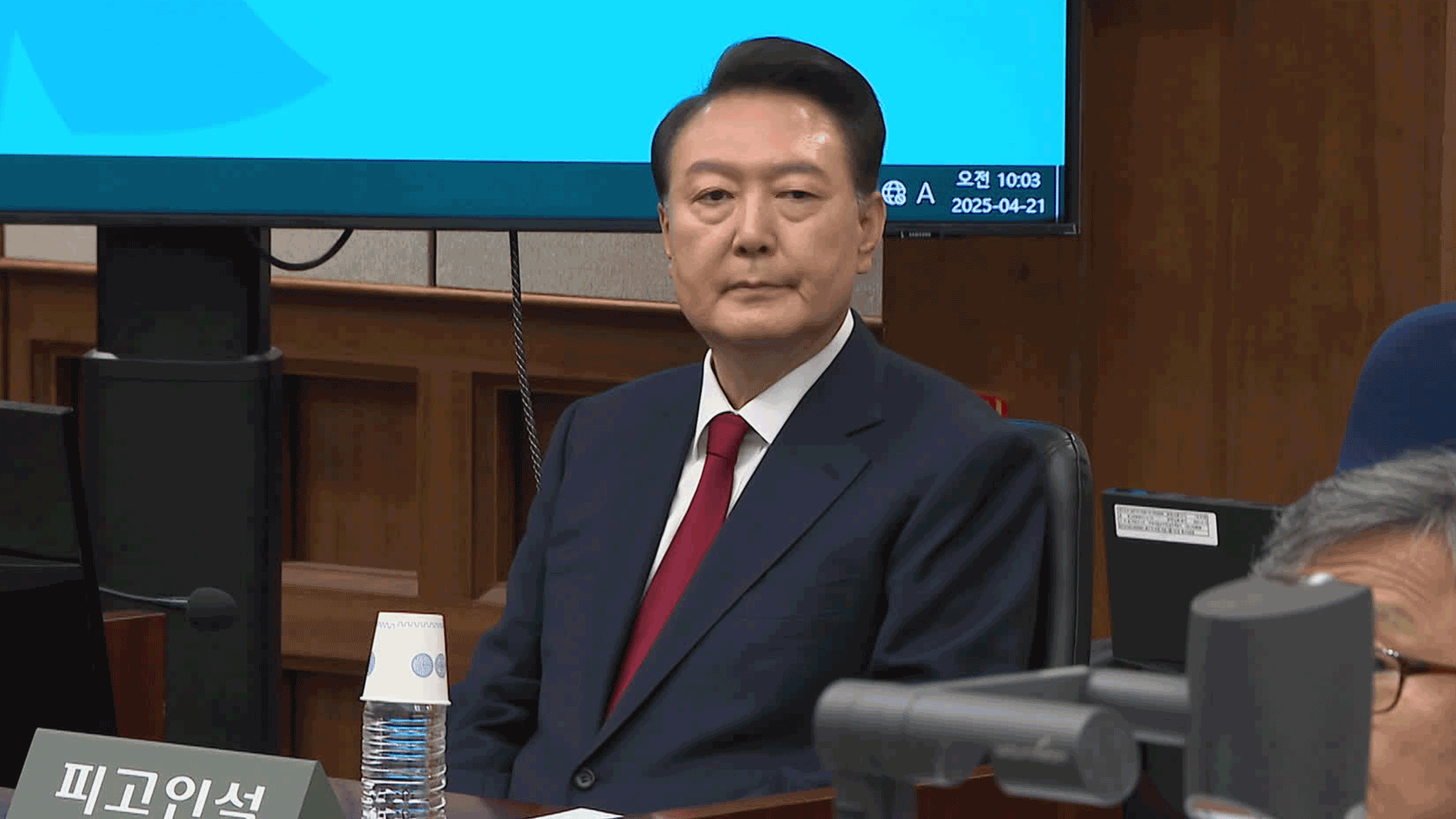

이 기사에 대한 의견을 남겨주세요.